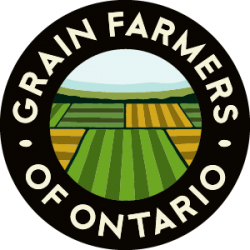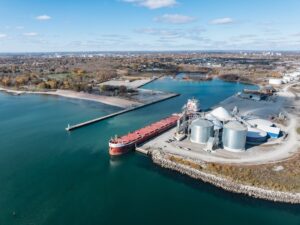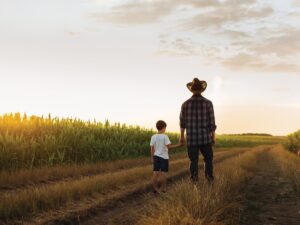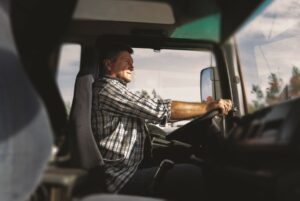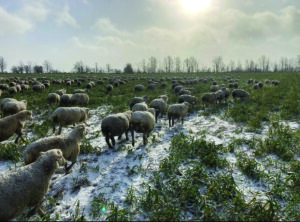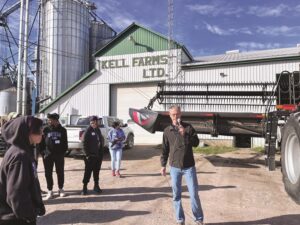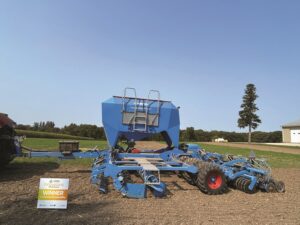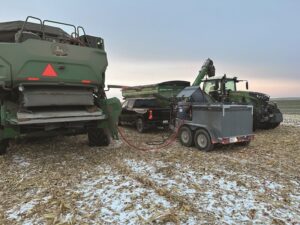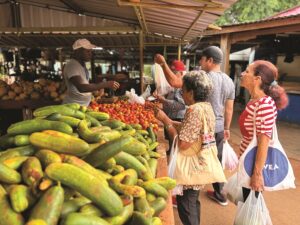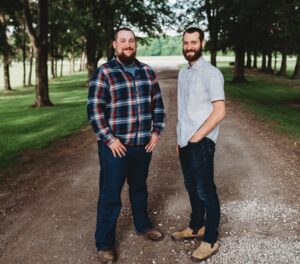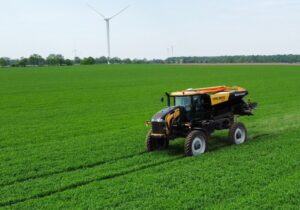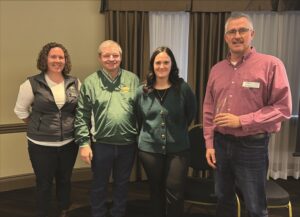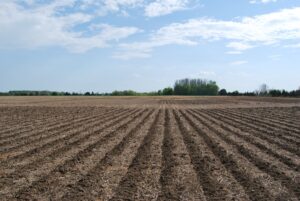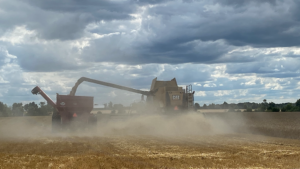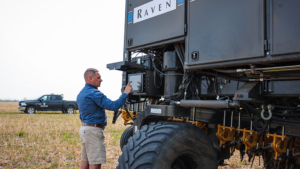Farming on Ontario’s urban fringe
FARMING NEAR CITIES BRINGS UNIQUE CHALLENGES
campbellville-area farmer Peter Lambrick is at the helm of an 800-acre corn, soybean and wheat-growing operation. He rotates these crops, along with registered seed and hay production entirely on rented land in the Halton Region, part of the Greater Toronto Area (GTA). With shifts in land ownership changing the complexion of rural communities, farmers like him who crop rental properties located on the urban fringe are charting changeable waters.
Negotiating rental agreements with folks not tied to farming, dealing with the impacts of land preserve legislation, moving large equipment on high-traffic roads, navigating curbs, medians and culverts not designed to accommodate wide, heavy equipment, and keeping the peace with residential neighbours are all items on these farmers’ “must-do” list. Many of the challenges and opportunities their businesses face are unique.
2006 census data shows 3,707 farms in the GTA, covering almost 678,000 acres in the regions of Durham, Halton, Peel and York. In terms of gross farm receipts, grain and oilseed production is in third place behind dairy and greenhouse operations, making up about 11 percent, or $72,000,000, of the total. The average farm size within the GTA is decreasing – it’s 183 acres, unlike the increasing provincial average of 233 acres.
negotiating with landowners
When it comes to setting up rental agreements with landlords who are new to the rural community, “you have to be fairly clear in explaining how you will be farming,” says Lambrick. “For instance, we spread manure from one local poultry operation. Most landowners can be convinced that it’s good for their land and that the benefits outweigh the downside of what can be fairly potent odours, depending on the weather the day the manure is being spread.”
Dale Mountjoy grows over 1,300 acres of corn, soybeans and wheat in the Durham region, near Whitby. “We deal with two types of landowners – urban-oriented ones who want a country lifestyle while living close to the city and speculators/ developers,” he observes. There really are no templates for rental agreements, so farmers investing in cropping a property must be vigilant about fine details.
“In some agreements with developers, you give up any right to the crop, which means you could lose it to earth scrapers within the course of two weeks, or you could have crop damaged or access blocked by having fill dumped in the corner of a field,” he notes. On the upside, rent on these properties is quite reasonable, and mutually positive business opportunities can arise from farmers being more closely linked to urban-based business owners. Mountjoy has rented a tractor, at an industrial rate, to a nearby steel mill to run a drive shaft (or PTO), has done archeological plowing for a developer and he knows of farmers who have received clean fill from construction sites to fill in ravines or wash-out areas on their land.
Attitudes of landowners span a wide spectrum, so it’s a case of renter beware. “Aside from building a new home on the property, many of them aren’t quite sure what to do with the other 99 acres,” Lambrick notes. “We do run into the attitude that growing corn is bad for the land; but this presents the opportunity for us to do some myth-busting about genetically modified crops and to explain that crop rotation, along with reduced and minimum tillage practices actually benefit the land.” Both farmers have had to walk away from properties into which they had invested significant time and expense when the owner insisted on it being farmed organically.
road rules
Traveling from farm to farm with large equipment on busy roadways can be death-defying. Farmers have to choose what time of day “on the 24-hour clock” to venture out. All it takes is one hesitant driver behind them to cause a huge and potentially dangerous traffic backlog. “I sit on my tractor and continually shake my head at how drivers react when they come up on a slow-moving vehicle on the road. They seem to have no concept of what would happen if there was a collision,” says Lambrick. He relates a story of an employee on his way home with a tractor and sprayer who was pulled over by a police officer advising the hired hand to stop and get out of people’s way. “When you think about it, why should I have to bounce my $200,000 piece of equipment all over the edge of the road in favour of other traffic?”
an undefined future
So where is this heading for the future? Lambrick believes that as non-farmer ownership of land within GTA municipalities increases, more of the land will be left to grow wild, or only be used to produce hay. He also sees a trend toward foreign and investment company ownership of significant blocks of land. Both he and Mountjoy play an active role representing the farm community with municipal planning staff and politicians to help ensure agriculture’s needs are known. Planners need to understand, for example, how road and culvert infrastructure design affects movement of large farm equipment from field to field.
In general, GTA agriculture is trending toward more intensive types of operations suited to serving nearby consumers. Why then, do farmers like Lambrick and Mountjoy not shift over to growing floriculture, nursery, or fruit and vegetable crops, or raising goats or sheep? “If I was just starting out in farming, I would probably consider at least a partial switch over to fruit and vegetable production,” says Lambrick, noting that his wife grows some produce and runs a roadside stand on their six-acre homestead. But for now, both farmers agree that with considerable investment in equipment and their expertise geared toward growing corn, soybeans and wheat, they are content to stay the course. •

